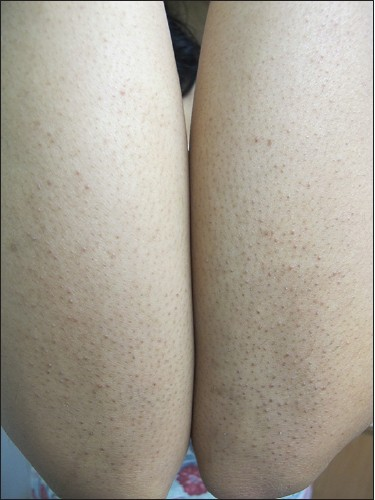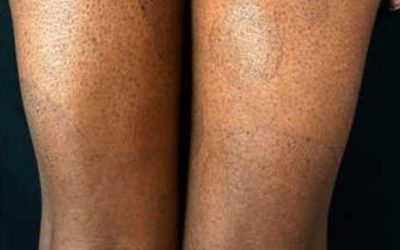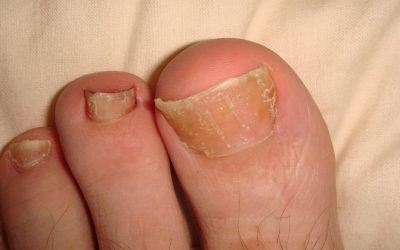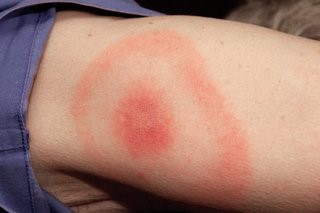Keratosis Pilaris (Goosebumps): Causes, Symptoms, and Treatment

Keratosis pilaris usually occurs in children and young adults (up to 20% of children, 50-70% of adolescents and about 40% of adults). Although the exact cause of the disease is not known, it is often associated with atopic dermatitis, ichthyosis.
Diagnosed based on the clinical picture, small, flesh-colored or pink, hard papules are usually observed on the extensor surfaces of the limbs: upper arms, thighs, less frequently observed in other areas of the body.


- Emollients (moisturizing creams) and keratolytics. Preparations containing milk acid, salicylic acid, urea, helps to soften and smooth keratotic papules.
- Topical retinoids. Can be used as a secondary treatment without the help of emollients and keratolytics.
- Topical corticosteroids. In case of pronounced inflammation, they can be used for 1-2 weeks.
- Third-line treatment may include systemic retinoids, laser therapy, and ablation procedures.
Daily washing in a lukewarm shower using mild, soap-free skin cleansers is recommended. No longer than 3 minutes after washing, apply moisturizing cream to the skin (choose the cream according to the description given in the treatment section). Wear looser clothing without causing additional skin irritation. It is important to maintain adequate humidity (50-60%) at home, and special air humidifiers can help with this. If you do not know which method of treatment is the most suitable for you, consult a dermatovenerologist.

Paraneoplastic dermatological manifestation of gastrointestinal malignancies
rare disorders resulting from the immune system’s response to a cancerous process (neoplasia) in the body. Gastrointestinal neoplasms more often cause paraneoplastic syndromes affecting the skin.
Nail psoriasis
Psoriasis is a form of chronic systemic inflammatory autoimmune disease that mostly affects fingernails and toenails.
Lyme disease
It is contracted when a blood-sucking tick injects intestinal contents containing bacteria into a wound. Untreated Lyme disease can damage not only the skin, but also the internal organs, joints and nervous system.




